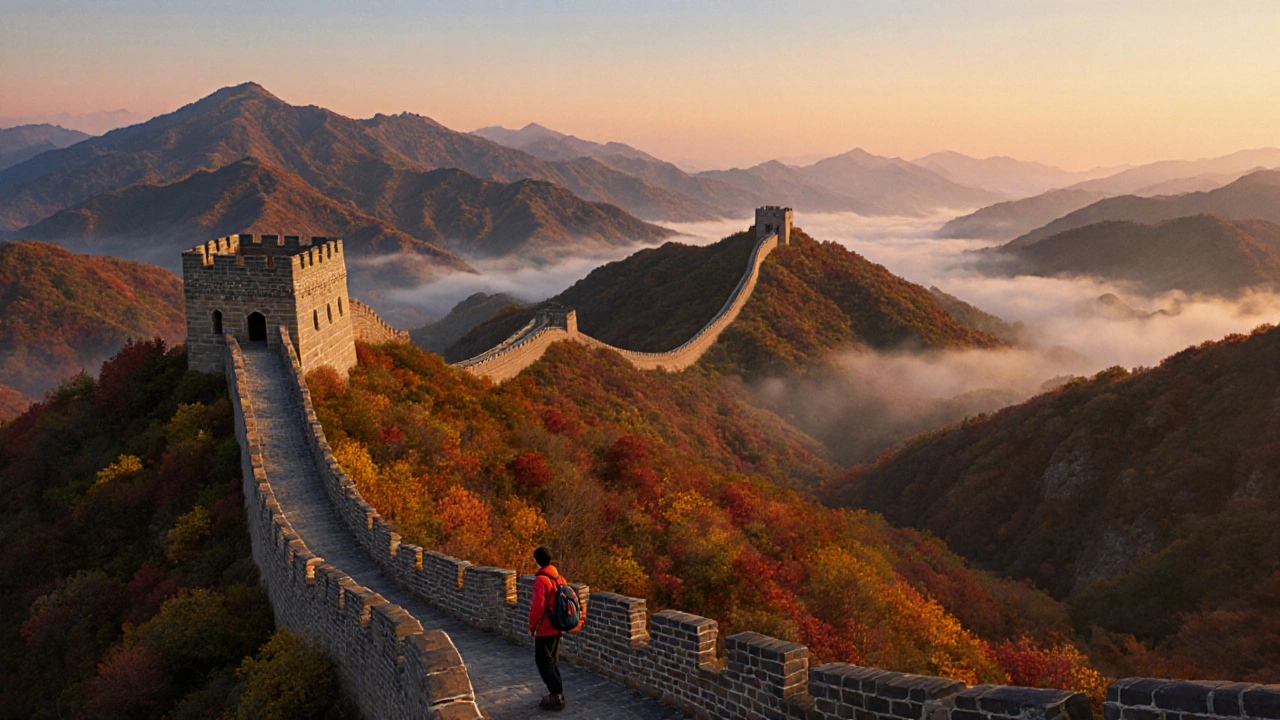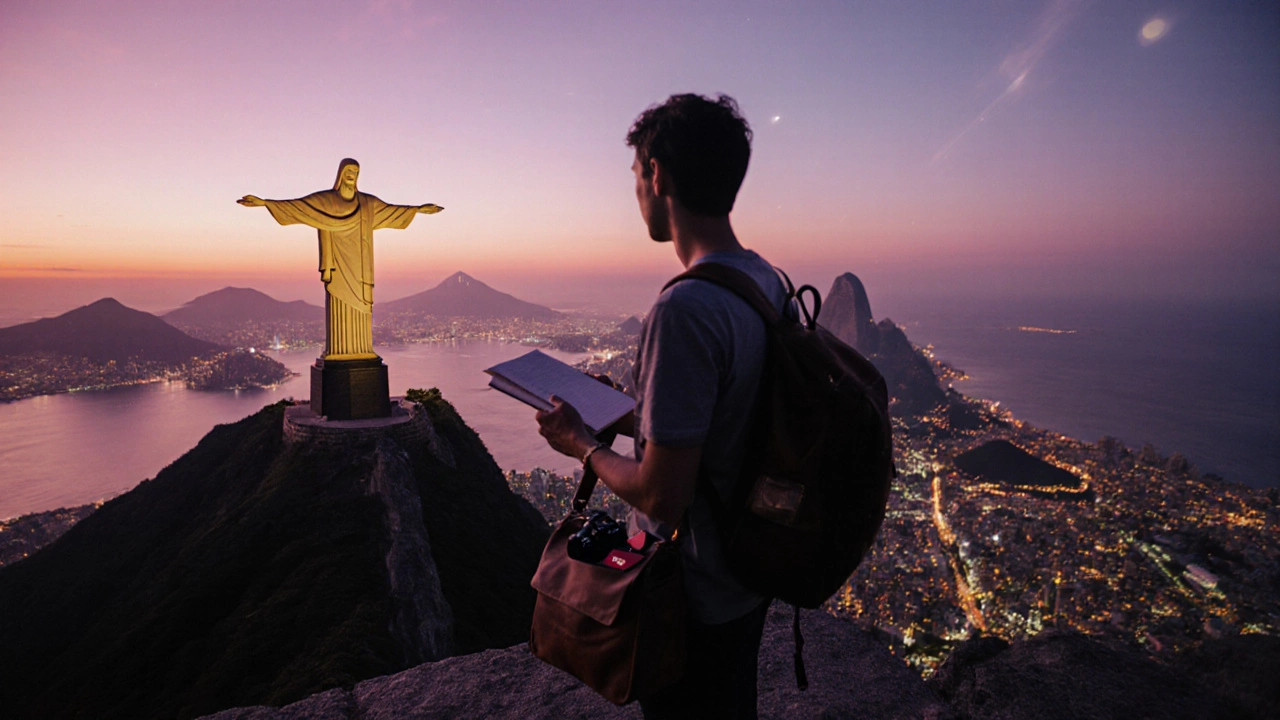Ever wondered which structures have become the face of humanity’s creativity? Below is a curated list of the top monuments that attract millions, inspire photographers, and tell stories spanning centuries.
World Monument is a cultural landmark recognized globally for its historical, architectural, or symbolic significance. These sites often hold UNESCO World Heritage status, draw record visitor numbers, and become must‑see stops on any travel bucket list.
1. Great Wall of China
Great Wall of China is a massive fortification built across northern China between the 7th century BC and the 16th century AD. Stretching over 21,000 km, it was originally meant to deter invasions. Today, you can hike the restored sections near Beijing for panoramic views. Pro tip: visit early autumn to catch the golden foliage and avoid crowds.
2. Taj Mahal (India)
Taj Mahal is a white marble mausoleum commissioned by Emperor Shah Jahan in 1632 to honor his wife Mumtaz Mahal. Its flawless symmetry and reflecting pools make sunrise the most magical time. While the monument itself draws over 7 million visitors a year, the lesser‑known tombs of the emperor’s family lie just a short walk away.
3. Pyramids of Giza (Egypt)
Pyramids of Giza are three ancient tombs-Khufu, Khafre, and Menkaure-built between 2600 and 2500 BC. They remain the only surviving wonder of the original Seven. A camel ride around the site provides a unique perspective, but the interior chambers of the Great Pyramid can be explored only with a licensed guide.
4. Machu Picchu (Peru)
Machu Picchu is a 15th‑century Inca citadel perched 2,430 m above the Amazon basin. The legendary “Lost City of the Incas” was rediscovered in 1911 by Hiram Bingham. The classic Inca Trail requires a four‑day trek, while the modern train‑and‑bus combo lets you reach the Sun Gate in a day.
5. Eiffel Tower (France)
Eiffel Tower is a wrought‑iron lattice tower erected for the 1889 World’s Fair in Paris. Standing 324 m tall, it offers three observation decks. Booking a dinner at the Michelin‑starred 58 Tour restaurant guarantees a view of Paris lights that few can match.

6. Statue of Liberty (USA)
Statue of Liberty is a colossal copper sculpture gifted by France to the United States in 1886. Symbolizing freedom, the crown’s narrow staircase lets you see New York Harbor from a rare angle. Combine the visit with a ferry ride to Ellis Island for an immersive immigration history lesson.
7. Colosseum (Italy)
Colosseum is an ancient Roman amphitheatre completed in 80 AD, capable of seating 50,000 spectators. Gladiator combats and mock sea battles once thrilled the crowds. A night‑time audio‑guided tour reveals how the structure’s hidden underground chambers operated.
8. Angkor Wat (Cambodia)
Angkor Wat, a 12th‑century temple complex, sits amid the dense jungles of Siem Reap. Its five towers symbolize Mount Meru, the center of the Hindu universe. Sunrise over the moat creates a mirror image that photographers swear is unbeatable.
9. Sydney Opera House (Australia)
The iconic sail‑shaped shells of the Sydney Opera House were completed in 1973. Beyond performances, you can take a backstage tour to see the acoustics engineering that earned it UNESCO status in 2007.

10. Christ the Redeemer (Brazil)
Perched atop Corcovado Mountain, the 30‑meter statue of Christ the Redeemer watches over Rio de Janeiro. Visiting at sunset provides a breathtaking panorama of the city and Guanabara Bay.
Quick Comparison of the Top 7 Monuments
| Monument | Country | Year Completed | UNESCO Status | Annual Visitors (millions) |
|---|---|---|---|---|
| Great Wall of China | China | 7th century BC - 16th century AD | World Heritage (1987) | 10 |
| Taj Mahal | India | 1648 | World Heritage (1983) | 7 |
| Pyramids of Giza | Egypt | 2600 BC | World Heritage (1979) | 14 |
| Machu Picchu | Peru | 1450 | World Heritage (1983) | 1.6 |
| Eiffel Tower | France | 1889 | Not a heritage site (iconic) | 7 |
| Statue of Liberty | USA | 1886 | World Heritage (1984) | 4.5 |
| Colosseum | Italy | 80 AD | World Heritage (1980) | 7.5 |
How to Plan Your Monument Tour
- Pick a region. Clustering sites (e.g., Europe: Eiffel Tower, Colosseum, Taj Mahal? Actually Taj Mahal is in Asia-choose Asia, Europe, Americas.) This cuts travel time.
- Check opening hours. Many monuments close for restoration; a quick glance at official tourism boards prevents surprises.
- Buy tickets online. Skip the line by reserving slots for the Great Wall, Machu Picchu, or the Statue of Liberty.
- Pack accordingly. Comfortable shoes, a water bottle, and a portable charger are essential for long outdoor walks.
- Respect local etiquette. For example, remove shoes at the Taj Mahal’s interior or avoid flash photography at Angkor Wat.
Common Mistakes to Avoid
First‑time travelers often try to cram every monument into a single trip, which leads to exhaustion and missed photo opportunities. Instead, allocate at least two full days for large sites like the Great Wall or Machu Picchu. Another pitfall is overlooking the “off‑peak” hours; sunrise and late afternoon usually have fewer crowds and softer light.
Why These Monuments Matter
Beyond their aesthetic appeal, each monument reflects cultural values, engineering feats, or pivotal moments in history. The Great Wall embodies defense strategies; the Taj Mahal showcases love immortalized in stone; the Pyramids demonstrate ancient precision; Angkor Wat illustrates religious syncretism. Understanding the story behind the stone deepens the travel experience.
Which monument receives the most visitors each year?
The Great Wall of China tops the list, drawing roughly 10 million tourists annually, according to the China National Tourism Administration.
Do I need a visa to visit these monuments?
Visa requirements vary by nationality and destination. For example, U.S. citizens can enter Brazil visa‑free for tourism, but need a Schengen visa for France and Italy.
Are all these sites UNESCO World Heritage listed?
All except the Eiffel Tower and Sydney Opera House hold UNESCO status. Both are iconic global symbols, but they haven’t been inscribed as heritage sites.
What’s the best time of year to visit the Taj Mahal?
October to March offers mild weather and clearer skies, making sunrise photography ideal.
Can I access the interior of the Pyramids of Giza?
Only the Great Pyramid permits limited interior tours; you’ll need a licensed guide and a separate ticket.
Tick off these landmarks, snap a few unforgettable photos, and let each stone tell you a piece of human history.
